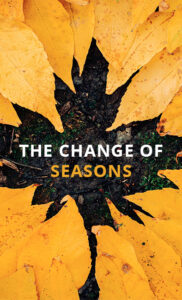 Let’s take a moment… I mean really take a moment. When was the last time we took a moment to ourselves? Not the 30 minute uninterrupted bath, and not the family vacation that we *sometimes* need a vacation from. Really took a moment to contemplate our life, the history of it, and our expectations from it.
Let’s take a moment… I mean really take a moment. When was the last time we took a moment to ourselves? Not the 30 minute uninterrupted bath, and not the family vacation that we *sometimes* need a vacation from. Really took a moment to contemplate our life, the history of it, and our expectations from it.
Looking back, we find ourselves coming from somewhat of a rocky season. We aren’t just talking about COVID, I mean go back to 2018. Between the market crash, floods, tornadoes, covid, the town shutting down, and the slow recovery… we’ve had something of a time these past few years. But that’s all in the past, what about the future? Have you thought much about the future and what you expect from it? Some might have the answer “yes”, and some “no,” but we can all agree that it’s been a little farther from our minds these past few years.
Our minds can get into something called “survival mode” when we go through stressful events or even years of slightly stressful situations. We have this “survival mode” because it’s necessary. I MEAN, if you are stuck on a deserted island, the farthest thing from your mind is going to be your 401k plan, it’s going to be “WHERE IS MY NEXT MEAL COMING FROM???” We block out everything that is too far out, the future and thinking about the past, and our mind solely focuses its power on the present. Survival mode is not too shabby when you are thinking about actual life and death situations, hanging from a ledge will get you to focus really hard on the strength of your fingertips. However, when the moment passes, when we are lifted off the desert island or pulled up from the ledge, we find our minds continuing to focus solely on the present.
When we live with our minds solely in the present moment, we tend to forget the longer term goals we might have, or the relationships from our past that have been most impactful in our lives. What is good for survival mode, it’s necessarily good for everyday life. So we find ourselves in a similar predicament, being pulled off the ledge of the last several years, brains fully in “survival mode” and thinking, “oh no, what’s next?”
Switching our brain from “survival mode” to “living mode” is no small task. We have to convince our brains that we are no longer threatened, we are no longer fighting for our lives, we are living them. It takes effort. Lots of effort, working towards reprogramming our brains to see more than the next 24 hours, more than the next week or month. We CAN start to dream again, but we need to put in the work.
Find time to sit down and journal, even if it’s 5 minutes everyday. Take three pages and title them on the top, “Past” “Present” and “Future.” When you make the time, jot down a few thoughts regarding your past, present, and future. It’s amazing what comes out of these amazing things called our brains when we make the time to use them. Take those pages, and meditate on them throughout the next week, find your mind start to expand to reconsider the future, your goals, your hopes, and your dreams (and then take a deep breath, get ready for what’s next).
If you haven’t heard of the author Mel Robbins, you need to get acquainted. She came out with a book in 2017 called “The Five Second Rule” and it has a very simple premise. If you have an instinct to act on a goal, you must physically move within 5 seconds or your brain will kill it. That’s it. The whole book summed up in a sentence, but let’s tear that apart because the impact is HUGE.
- The moment you have an instinct – Instincts are not rash, they are never destructive, illegal or harmful, but they are always pulling, always gutsy, and always come from the heart. You know you should do something, even though you “don’t want to.”
- To act on a goal – Instincts are almost always attached to a goal. Something that we have hoped to dream of for ourselves, yet have not been achieved yet. This is the difference between movement for movement’s sake, and movement with a purpose.
- You must push yourself – There is a small window of opportunity, we know that we have an instinct. We know it’s tied to a goal. We also know, it’s not what we would normally do. It requires a push, something from within ourselves to get the ball rolling.
- To move within 5 seconds – It’s not going to kill us if we don’t move in 5 literal seconds, it will just kill the instinct, which means we won’t end up doing it. 5 seconds is general, but ultimately it needs to work for you, 5 seconds or less, and we need to move towards something that will fulfill the instinct we have. For some, the pushups need to start within 5 seconds, for others, it’s writing down our commitment within 5 seconds.
- Or your brain will kill it – Our brain has three simple functions, it narrates and catalogs our memories, operates bodily functions, and protects us from danger. When we don’t move, we signal our brain saying “oh no, something is wrong, I don’t want to do this.” Our brain takes that signal, and squashes it.
There is so much more to her book but it boils down to those five points. Take all your future thoughts, and put them to the five second rule. If we cannot act on the instincts that we have towards the future goals and dreams within 5 seconds, our brain won’t let us get there, and it’s a much tougher road.
All in all, we have been through the ringer these past few years, and our brains can sometimes become part of the hurdle we need to get past, but there are systems and processes to help us get into a better position, help our brains get on our side. So tell me, what is your instinct? What is your next move? What is your next dream?
5…4…3…2…1…
D.A. Myers LPC is a Licensed Professional Counselor in private practice in Sand Springs and Tulsa, Oklahoma. He owns Good Work Counseling, where he accepts people for the powerful force they are, and through a proven process, helps them get unstuck.
Read more articles about Sand Springs Wellness here.




